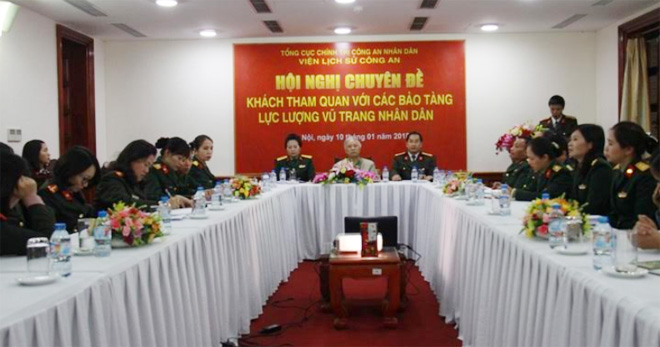Museums of People's Armed Forces strive to attract visitors
- Hoang Sa Museum to welcome the New Year
- Nick Ut presents “Napalm Girl” photo to Vietnam Women's Museum
The Public Security Museum was established in 1967 with an exhibition area of about 1,200 square meters and approximately 1,700 exhibits of all kinds. Besides, there are also some digital and electronic devices facilitating lookups and introduction about leaders, the Generals and “People’s Armed Forces” heroes of the Public Security Forces.
At present, the Public Security Forces run 5 museums and 73 tradition exhibition halls, of which 2 museums have been recognized and ranked, 5 relic sites have been restored, 3 historical sites have been classified as National relics, and a number of new memorials have been constructed.
 |
Speaking at the conference, Senior Colonel, Dr. Nguyen Van Viet, Deputy Director of the Institute of Public Security Forces History said that, over the past time, the Public Security Museum has made positive contributions to the missions of tradition education and force building.
All the museum, relic sites and tradition exhibition halls of the Public Security Forces have served as both attractive tourist destinations and training fields with interesting practical lessons for the police officers and soldiers, particularly public security cadets.
Senior Colonel Nguyen Van Viet stressed that the conference was part of the annual coordination plan between the Institute of Public Security History and the Museum of Vietnam Military History to effectively implement the cooperation program between the General Department of Politics of the Vietnam People's Army and the General Department of Politics of the Vietnam People's Public Security Forces.
At the conference, Assoc. Prof. Nguyen Van Huy, former Director of the Vietnam Museum of Ethnology shared his experiences and proposed some ideas to attract more visitors to the museums of People's Armed Forces and to improve the quality and position of the museums, contributing to building elite and modern military and public security forces while promoting the values of national cultural heritages.

